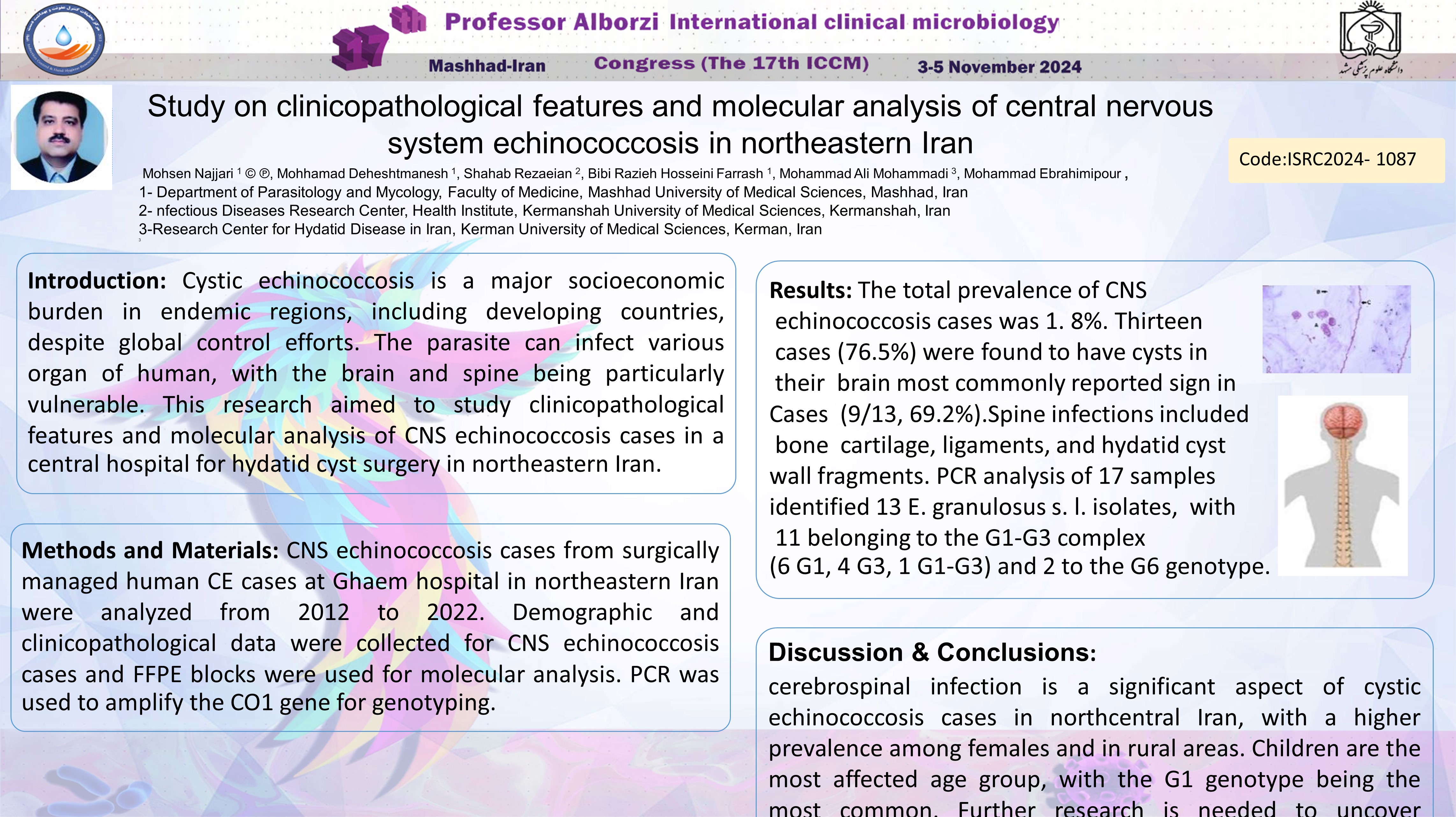مطالعه ویژگی های بالینی پاتولوژیک و تحلیل مولکولی اکینوکوکوز سیستم عصبی مرکزی در شمال شرق ایران
کد: G-1087
نویسندگان: Mohsen Najjari © ℗, Mohhamad Deheshtmanesh, Shahab Rezaeian, Bibi Razieh Hosseini Farrash, Mohammad Ali Mohammadi, Mohammad Ebrahimipour
زمان بندی: زمان بندی نشده!
دانلود: دانلود پوستر
خلاصه مقاله:
خلاصه مقاله
Background: Cystic echinococcosis is a major socioeconomic burden in endemic regions, including developing countries, despite global control efforts. The parasite can infect various organ of human, with the brain and spine being particularly vulnerable. This research aimed to study clinicopathological features and molecular analysis of CNS echinococcosis cases in a central hospital for hydatid cyst surgery in northeastern Iran. Methods: CNS echinococcosis cases from surgically managed human CE cases at Ghaem hospital in northeastern Iran were analyzed from 2012 to 2022. Demographic and clinicopathological data were collected for CNS echinococcosis cases and FFPE blocks were used for molecular analysis. PCR was used to amplify the CO1 gene for genotyping. Results: The total prevalence of CNS echinococcosis cases was 1. 8%. Most cases were female (64. 7%) and from rural areas (58. 8%). The highest number of cases (41. 2%) were aged ≤18 years, with majority being ranchers (47. 1%). Thirteen cases (76.5%) were found to have cysts in their brain, particularly in the supratentorial site. Headache was the most commonly reported sign in cases (9/13, 69.2%). Infiltration of eosinophils, polymorphic inflammatory cells, and giant cells, gliosis, and foreign body granulomatous reaction, along with mild infiltration of mononuclear cells showing degeneration and necrotic foci in the brain infections. Spine infections included bone cartilage, ligaments, and hydatid cyst wall fragments. PCR analysis of 17 samples identified 13 E. granulosus s. l. isolates, with 11 belonging to the G1-G3 complex (6 G1, 4 G3, 1 G1-G3) and 2 to the G6 genotype. Conclusion: cerebrospinal infection is a significant aspect of cystic echinococcosis cases in northcentral Iran, with a higher prevalence among females and in rural areas. Children are the most affected age group, with the G1 genotype being the most common. Further research is needed to uncover unknown aspects of this issue.
کلمات کلیدی
Hydatidosis; cerebral echinococcosis; spinal echinococcosis; PCR; phylogenetic analysis; Iran
